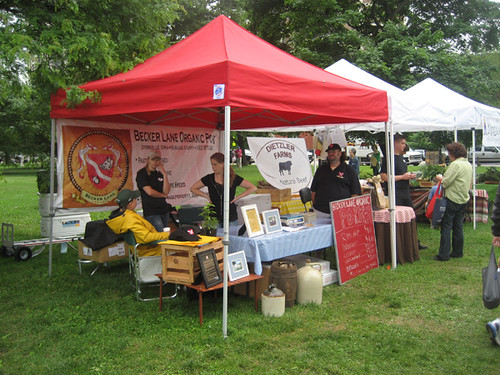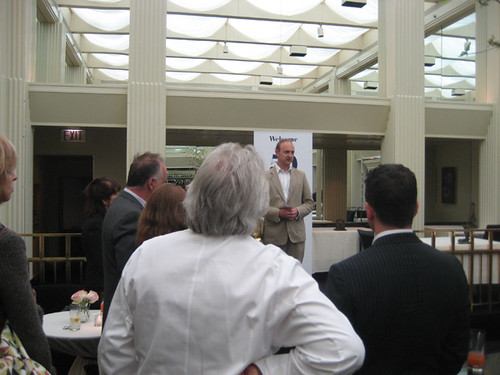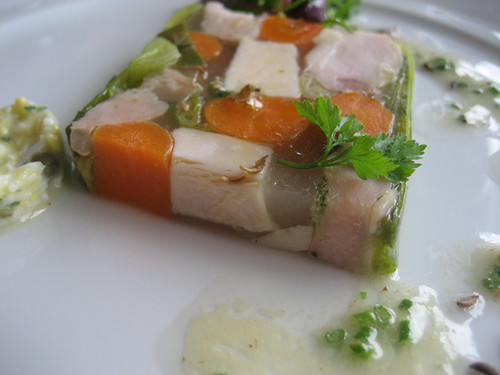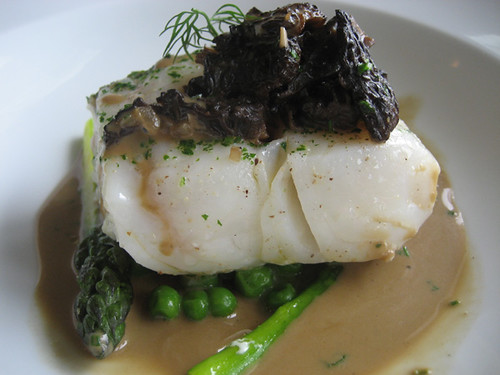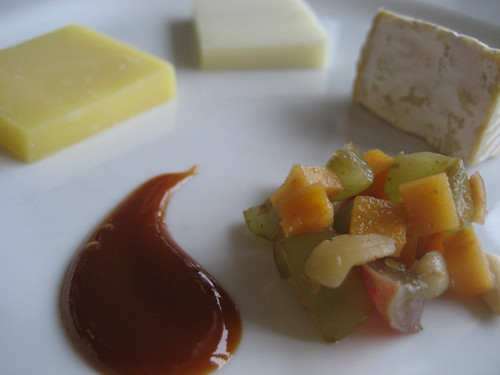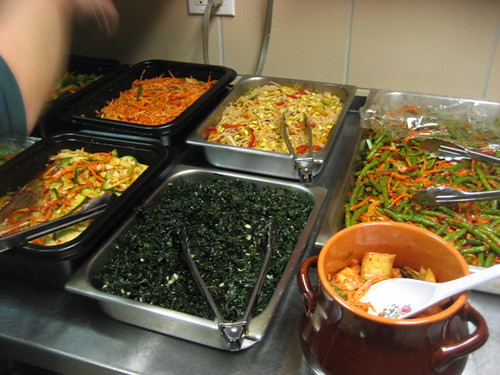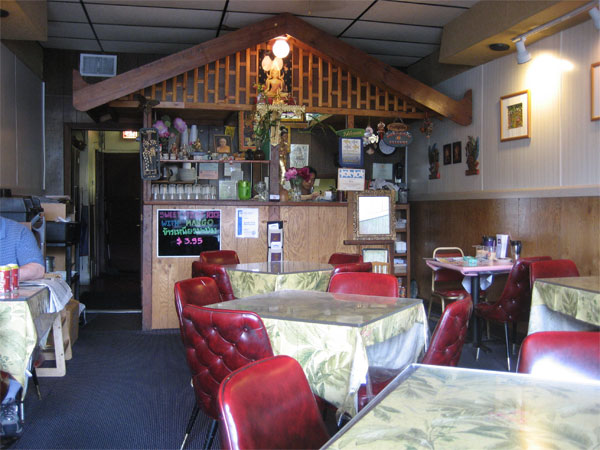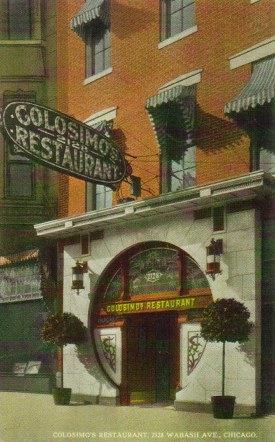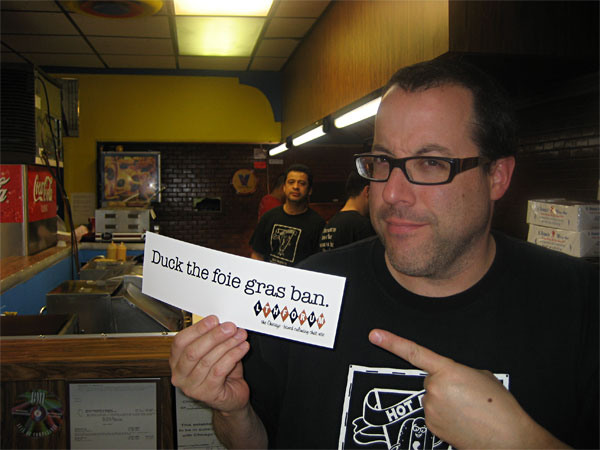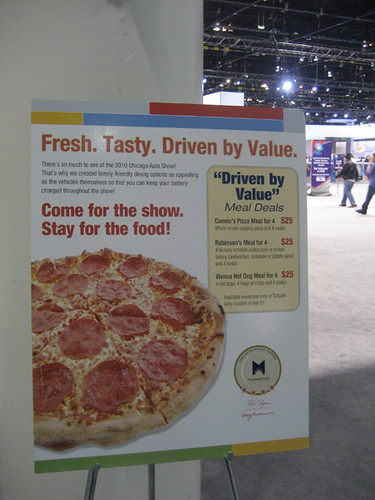WELCOME, EATOCRACY READERS! First thing you want to do is check out my latest video, Big Chef Small Farmer, just watch it above (if you’re at the main page) or click here. Then check out recent posts below. If you’re a regular reader wondering what Eatocracy is, it’s this and I’m here.
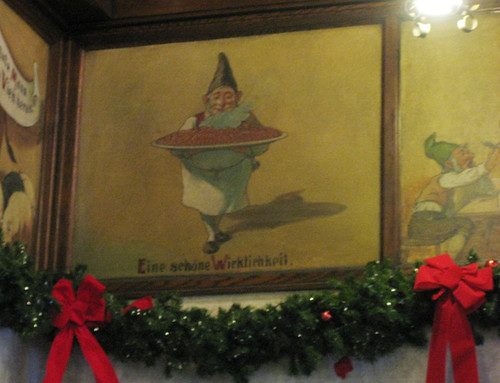
Well, the Usinger elves are coming with their big plate of sausages, and so it must be Sky Full of Bacon’s second anniversary, that is, the second anniversary of the first video (a few posts predate that). Actually tomorrow, but I’m sure you have better things to do on a Saturday, so we’ll celebrate today.
I’m less inclined to ramble extensively than last year but that’s because I’m busier in ways that were part of the point of doing all this. I’m coming off a bunch of food freelance work, some in last week’s Reader, some in next week’s Time Out, preparing the next video, and continuing to try to keep up with the city’s heedless-of-recession expanding restaurant scene.
There are a few milestones to note. Total views of my videos are approaching 40,000— and it’s remarkable that even the ones that are close to two years old continue to draw viewers steadily, only a couple each day admittedly, but still, it’s great to see that the foraging one has passed 7000 views, the Texas barbecue one is over 4000, and others have passed 3000 and 2000 months or even years after they were first made. (The one for which I risked my life on a whitefish fishing boat, alas, is taking a long time to reach 1000, though.)
Another milestone is that the new version of the site, a long cherished project, is up, if still in the process of refinement. But its main goals— highlighting the videos, adding a proper blogroll, keeping me from having to manually turn all the type from dark gray to black, etc.— are already accomplished, big thanks to my friend and collaborator Wyatt Mitchell.
And one of Sky Full of Bacon’s goals, to help establish my name as a food guy around town, has certainly worked. That doesn’t mean everything I pitch gets bought (or even acknowledged) but it certainly helps, and it also means that editors come to me with things they need done that they know to be up my alley, which is the freelancer’s dream, surely. I thank all those who have taken me seriously since I went from defiant, sometimes obnoxious citizen media at LTHForum to trying to be a pro, and have included me in many different kinds of projects and events.
Above all, I thank you, viewer-reader-commenter dear. I’d do this if no one read it— the hypothetical there may be self-delusion at times— because to no small extent, this is where I keep my notes, but I wouldn’t do the videos if no one watched them. I might do them for a lot fewer people than actually do watch them, though, so to know that something like the population of Naperville has watched them, that I could have filled the Chicago Theater 10 times over with all the viewers of my videos, is pretty cool. Thank you for your visits, your support, your comments and retweets and Facebook and Vimeo Likes, and please, help yourself to the sausages. The elves worked on them all morning.
Meanwhile, since it’s almost the end of the quarter, here are the best things I’ve eaten in the past few months, following up on the list at the end of this post:
• Burnt ends at L.C.’s in Kansas City (post to come)
• Bionic Burger, fries and cherry limeade, Wichita (post to come)
• Strawberry rhubarb pie made by me with Green City strawberries and rhubarb
• Hoosier Mama asparagus/lemon/ricotta handpie
• Rib tips at Mary’s BBQ, 606 S. Pulaski
• Collard greens at Fat Willy’s, which was way better than I remembered from, uh, 5 or 6 years ago
• Wild boar naan’wich, Gaztro-Wagon
• Thai-lime-cilantro ice cream at Jeni’s in Columbus
• Oil-poached halibut at Everest
• Pea soup at LM Restaurant
• Sturgeon and spongecake dessert at Blackbird (that’s two separate dishes, by the way)
• Cranberry-orange teacake at Bleeding Heart Bakery, first thing I’ve really loved there
• Scallops served on braised oxtail at Longman & Eagle
• Gin, Great Lakes Distillery, and Maria’s Pizza, Milwaukee
• Jared Wentworth/Longman & Eagle’s waffle with dehydrated bacon and ice cream, Baconfest


 Posted in
Posted in 

